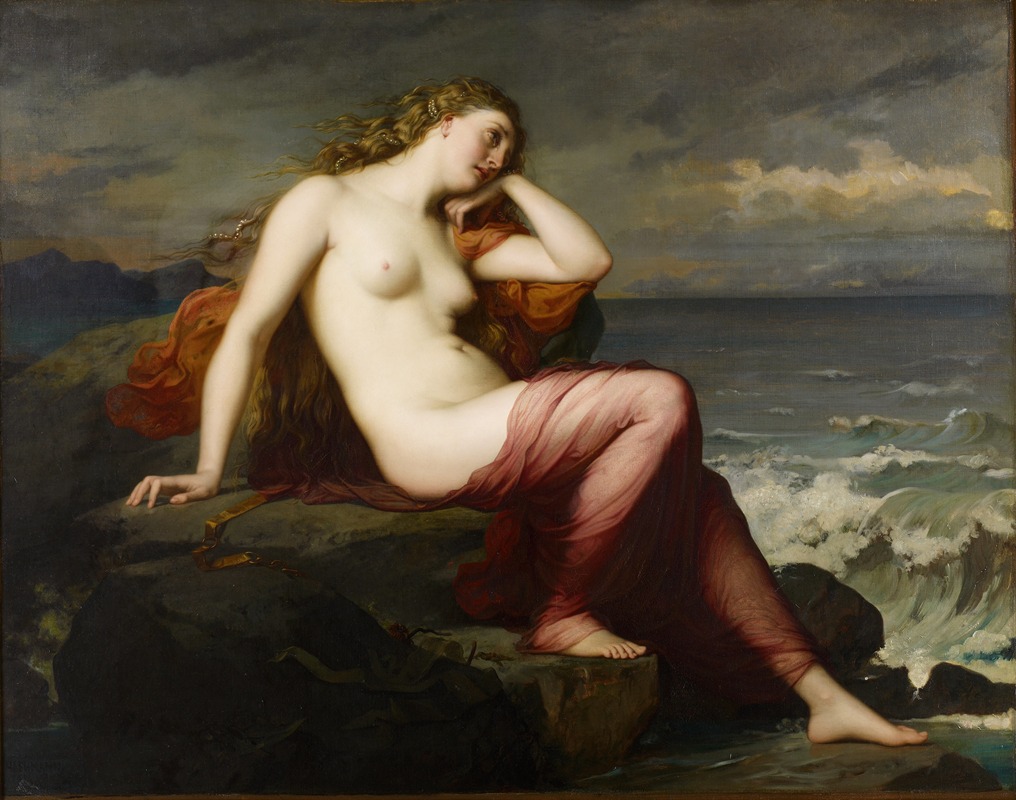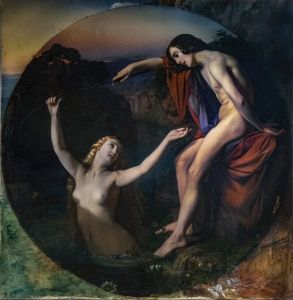
Calypso
A hand-painted replica of Henri Lehmann’s masterpiece Calypso, meticulously crafted by professional artists to capture the true essence of the original. Each piece is created with museum-quality canvas and rare mineral pigments, carefully painted by experienced artists with delicate brushstrokes and rich, layered colors to perfectly recreate the texture of the original artwork. Unlike machine-printed reproductions, this hand-painted version brings the painting to life, infused with the artist’s emotions and skill in every stroke. Whether for personal collection or home decoration, it instantly elevates the artistic atmosphere of any space.
Henri Lehmann's painting Calypso is a work by the 19th-century French painter Henri Lehmann, who was known for his contributions to the academic art tradition. Lehmann, a student of Jean-Auguste-Dominique Ingres, was recognized for his meticulous technique and classical style, which reflected the influence of his teacher and the broader neoclassical movement.
The painting Calypso depicts the mythological figure Calypso, a nymph from Greek mythology. Calypso is best known from Homer's Odyssey, where she is described as living on the island of Ogygia. In the epic, she detains the hero Odysseus for several years, offering him immortality if he stays with her, though he ultimately chooses to leave and return to his homeland. Lehmann's interpretation of Calypso likely draws upon this mythological narrative, presenting her as a figure of beauty and melancholy, reflecting the themes of love, longing, and the passage of time.
While specific details about the creation date or commission of Calypso are not widely documented, Lehmann's career spanned much of the 19th century, and his works often explored classical and mythological themes. His paintings were exhibited at the Paris Salon, where he gained recognition for his skillful execution and adherence to academic principles.
Lehmann's Calypso is characterized by its refined composition and attention to detail, hallmarks of the academic style. The use of soft, harmonious colors and precise rendering of the human form demonstrate Lehmann's technical mastery. The emotional tone of the painting, which may convey Calypso's solitude or yearning, aligns with the romanticized portrayal of mythological subjects common in 19th-century art.
Today, Henri Lehmann's works, including Calypso, are appreciated for their craftsmanship and their role in the broader context of 19th-century academic painting. However, detailed information about the current location or provenance of Calypso is not readily available in public records.
This concise overview is based on the known historical and artistic context of Henri Lehmann's career and his thematic focus on classical mythology. Further research into museum collections or archives may provide additional insights into this specific work.

















